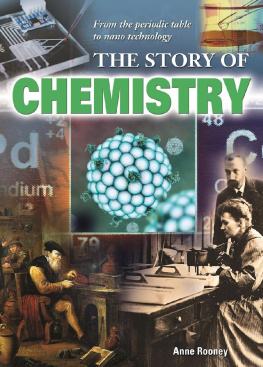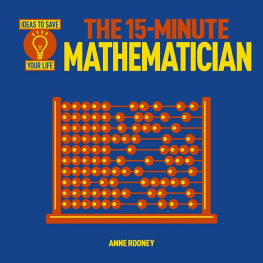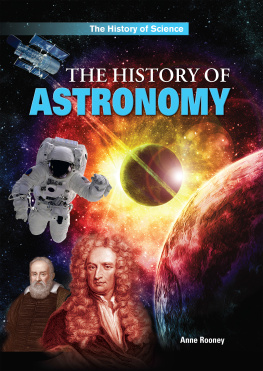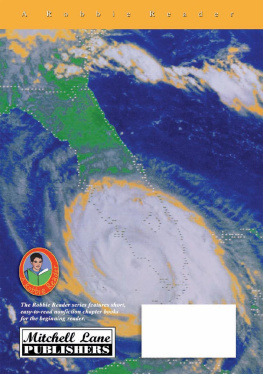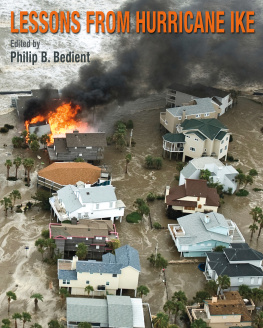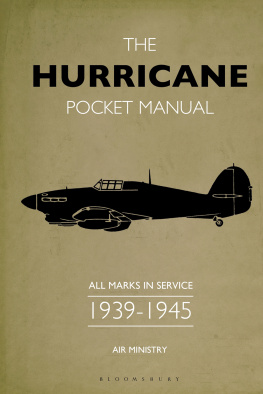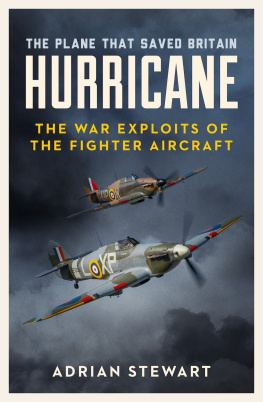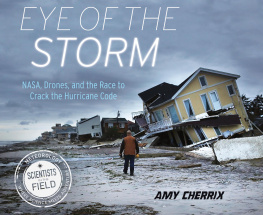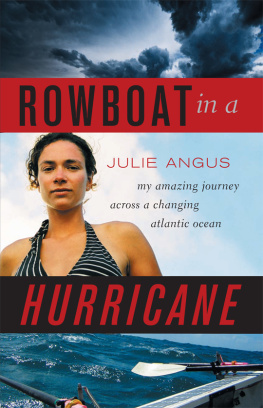Anne Rooney - Hurricane!
Here you can read online Anne Rooney - Hurricane! full text of the book (entire story) in english for free. Download pdf and epub, get meaning, cover and reviews about this ebook. year: 2006, publisher: Encyclopaedia Britannica;Britannica Digital Learning, genre: Politics. Description of the work, (preface) as well as reviews are available. Best literature library LitArk.com created for fans of good reading and offers a wide selection of genres:
Romance novel
Science fiction
Adventure
Detective
Science
History
Home and family
Prose
Art
Politics
Computer
Non-fiction
Religion
Business
Children
Humor
Choose a favorite category and find really read worthwhile books. Enjoy immersion in the world of imagination, feel the emotions of the characters or learn something new for yourself, make an fascinating discovery.

- Book:Hurricane!
- Author:
- Publisher:Encyclopaedia Britannica;Britannica Digital Learning
- Genre:
- Year:2006
- Rating:4 / 5
- Favourites:Add to favourites
- Your mark:
- 80
- 1
- 2
- 3
- 4
- 5
Hurricane!: summary, description and annotation
We offer to read an annotation, description, summary or preface (depends on what the author of the book "Hurricane!" wrote himself). If you haven't found the necessary information about the book — write in the comments, we will try to find it.
Hurricane! describes how and where hurricanes, cyclones, and typhoons happen.
Hurricane! — read online for free the complete book (whole text) full work
Below is the text of the book, divided by pages. System saving the place of the last page read, allows you to conveniently read the book "Hurricane!" online for free, without having to search again every time where you left off. Put a bookmark, and you can go to the page where you finished reading at any time.
Font size:
Interval:
Bookmark:

E-book published in 2012 by Encyclopdia Britannica, Inc., in association with Arcturus Publishing Limited, 26/27 Bickels Yard, 151-153 Bermondsey Street, London SE1 3HA. Britannica, Encyclopdia Britannica, and the Thistle logo are registered trademarks of Encyclopdia Britannica, Inc.
ISBN-13: 978-1-61535-651-5 (e-book)
This edition first published by Arcturus Publishing
Distributed by Black Rabbit Books
123 South Broad Street
Mankato
Minnesota MN 56001
Copyright 2006 Arcturus Publishing
All rights reserved
Library of Congress Cataloging-in-Publication Data
Rooney, Anne.
Hurricane! / by Anne Rooney
p. cm. -- (Natures fury)
Includes index
1. Hurricanes. I. Title
QC944.R66 2007
363.34922--dc22
2006022602
9 8 7 6 5 4 3 2
Editor: Alex Woolf
Design: Minds Eye Design
Picture Research: Shelley Noronha
Picture credits:
Corbis: 4 (Mike Theiss/Jim Reed Photography), 5 (Bettmann), 6 (Reuters), 8 (NASA), 9 (Eric Nguyen/Jim Reed Photography), 13 (David Tulis), 15 (Matthew Cavanaugh/EPA), 17 (Will and Deni McIntyre), 18 (NASA/JPL-Caltech), 19 (Rick Wilking/Reuters), 20 (Richard Carson/Reuters), 23 (Reuters), 24 (John Heseltine), 25 (Rafiqur Rahman/Reuters), 27 (Jim Edds/Jim Reed Photography), 28 (David J. Phillip/Pool/Reuters).
NASA Visible Earth: 11 (Jacques Descloitres, MODIS Rapid Response Team, NASA/GSFC), 26 (Scott Dunbar, NASA JPL), 29.
Science Photo Library: 7 (NASA), 10 (NOAA), 12 (Carl Purcell), 14 (Mike Theiss/Jim Reed Photography), 16 (Jim Reed).
TopFoto: 21, 22.
A hurricane is a furious, spiraling tropical storm system that can smash buildings apart and hurl trees, cars, and massive chunks of debris far into the air. Wind speeds in a hurricane can reach more than 150 miles (250 kilometers) per hour. The wind brings with it torrential rain and thunderstorms. A hurricane roars in from the ocean and lashes the coast for hours, causing terrible damage, but dies down quite quickly as it moves farther inland.
Angry gods and big winds
Tropical storm systems in the Americas are called hurricanes, but they are known by different names around the world. People in the Americas call them hurricanes after the ancient Mayan and Taino god of wind, storms, and destruction, Hurakan or Jurakan. In southeast Asia, where tropical storms come from the Pacific, people call them typhoons, from the Japanese tai foon, meaning great wind. In India and Australia tropical storms are called cyclones.
A tropical storm can be officially classed as a hurricane, typhoon or cyclone if it has winds that blow faster than 74 miles (118 kilometers) per hour.

Sand whips through a parking lot in Fort Lauderdale, Florida, as Hurricane Katrina (2005) hits the United States.
Hurricanes in history
Hurricanes, cyclones, and typhoons have always happened, but because many strike areas where people did not keep written records, we do not have detailed accounts of them going back very far in time. As soon as Europeans began to visit South and Central America, they encountered hurricanes. Christopher Columbuss ship sheltered from a hurricane in a bay in 1502, but 20 other ships were sunk by the storm on their way back to Spain.

A hurricane and resulting sea flood in Galveston, Texas, in 1900 destroyed the town and killed around 8,000 people.
 CASE STUDY
CASE STUDY
The Great Hurricane, 1780
Three hurricanes struck the West Indies in 1780, the worst of which killed 22,000 people over eight days, making it the deadliest hurricane ever to strike the Western Hemisphere. It destroyed nearly every building in Barbados, flattened St. Lucia, demolished St. Pierre, the capital of Martinique, and on St. Vincent it sent a storm surge 19.8 feet (six meters) high that washed villages out to sea. Most of the British fleet at St. Lucia was sunk, as well as 15 Dutch ships in Grenada. It would be 200 years before another hurricane would claim more than 10,000 lives in the Atlantic.
T ropical storms occur in tropical regions of the Atlantic, Indian, and Pacific oceans. The water temperature must be at least 79.7 F (26.5 C) for the storm to be able to gather enough strength to be classed as a hurricane. Most Atlantic hurricanes form off the west coast of Africa, then drift westward to reach land in Central America and the Caribbean.
Landfall
When a hurricane, cyclone, or typhoon reaches land, it wreaks destruction along the coast and continues its path inland. After hitting land the storm rapidly loses power since it is no longer heated from beneath by tropical seas. Within 12 hours most of the force has been spentalthough it can travel as far as 175 miles (280 kilometers) inland before dying out.

The people of Chockwe, Mozambique, depend on rainstormsbut floods are still disruptive.
Storm zones
The most destructive hurricanes strike the southeast coast of the United States, Central America, and the Caribbean. Typhoons plague the coasts around the Indian Ocean and many parts of the Pacific Ocean. In the Indian Ocean, they most often strike Indonesia, India, Sri Lanka, and Thailand but also hit Madagascar and east Africa. In the Pacific they are most common around Japan, eastern China, and the Philippines but can also strike the west coast of Australia and New Guinea. Their impact is greatest in areas where most people live.
The Caroline and Marianas island chains and the north coast of Luzon Island in the Philippines have the largest number of tropical storms anywhere in the world, with around 10 each year. Mozambique in Africa depends on the rain brought by tropical storms to boost its water supplies, but the country frequently floods as a result of these typhoons.

Jupiters red spota giant, ancient storm system.
 GREATEST STORM IN THE SOLAR SYSTEM
GREATEST STORM IN THE SOLAR SYSTEM
The planet Jupiter has a large red spot, which is actually a massive storm system. Like a hurricane, it consists of winds whirling in a circle at great speedsaround 240 miles (400 kilometers) per hour. Jupiter is a gas gianta planet made entirely of gasso the storm will never drift over land and die down. The storm has been raging for at least 300 yearsit was recorded as soon as the telescope was invented. The storm is 14,880 miles (24,800 kilometers) across, covering about the same area as the whole of the Earths surface.
A tropical storm builds up over the sea where equatorial winds from different directions meet. The warm air spirals upward, taking heat and moisture from the sea and growing increasingly strong.
Next pageFont size:
Interval:
Bookmark:
Similar books «Hurricane!»
Look at similar books to Hurricane!. We have selected literature similar in name and meaning in the hope of providing readers with more options to find new, interesting, not yet read works.
Discussion, reviews of the book Hurricane! and just readers' own opinions. Leave your comments, write what you think about the work, its meaning or the main characters. Specify what exactly you liked and what you didn't like, and why you think so.

